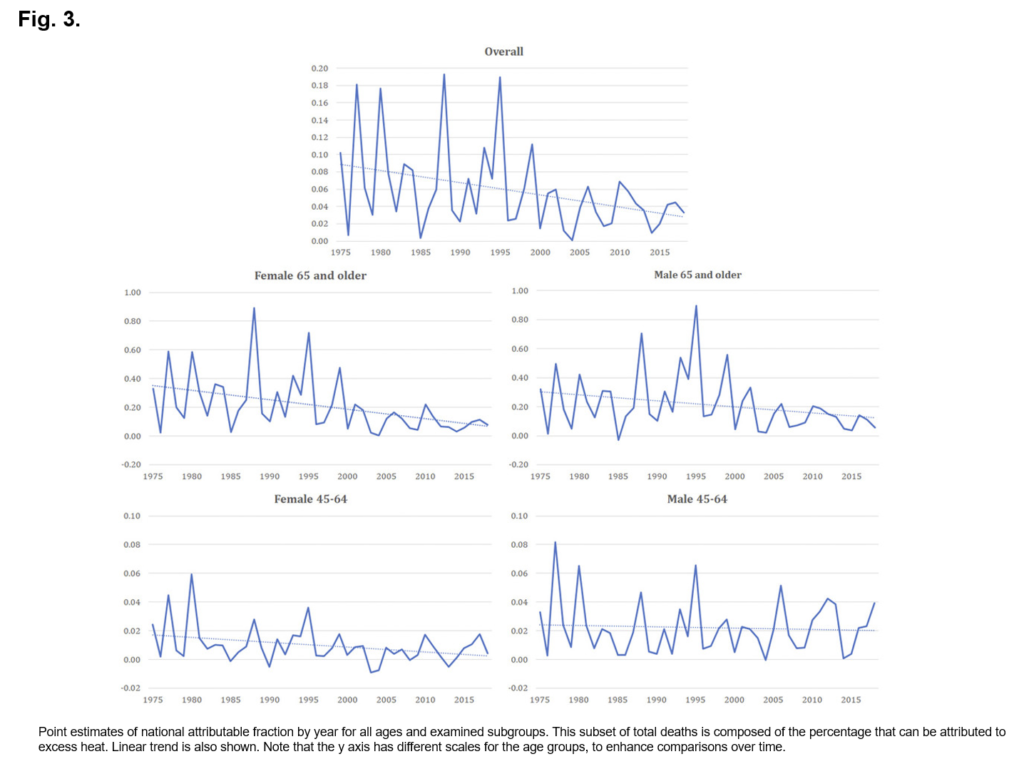Link: https://journals.ametsoc.org/view/journals/wcas/13/1/wcas-d-20-0083.1.xml
DOI: https://doi.org/10.1175/WCAS-D-20-0083.1
Graphic:

Abstract:
Much research has shown a general decrease in the negative health response to extreme heat events in recent decades. With a society that is growing older, and a climate that is warming, whether this trend can continue is an open question. Using eight additional years of mortality data, we extend our previous research to explore trends in heat-related mortality across the United States. For the period 1975–2018, we examined the mortality associated with extreme-heat-event days across the 107 largest metropolitan areas. Mortality response was assessed over a cumulative 10-day lag period following events that were defined using thresholds of the excess heat factor, using a distributed-lag nonlinear model. We analyzed total mortality and subsets of age and sex. Our results show that in the past decade there is heterogeneity in the trends of heat-related human mortality. The decrease in heat vulnerability continues among those 65 and older across most of the country, which may be associated with improved messaging and increased awareness. These decreases are offset in many locations by an increase in mortality among men 45–64 (+1.3 deaths per year), particularly across parts of the southern and southwestern United States. As heat-warning messaging broadly identifies the elderly as the most vulnerable group, the results here suggest that differences in risk perception may play a role. Further, an increase in the number of heat events over the past decade across the United States may have contributed to the end of a decades-long downward trend in the estimated number of heat-related fatalities.
Author(s): Scott C. Sheridan1, P. Grady Dixon2, Adam J. Kalkstein3, and Michael J. Allen4
Publication Date: Published-online: 14 Dec 2020
Print Publication: 01 Jan 2021
Publication Site: Weather, Climate, and Society